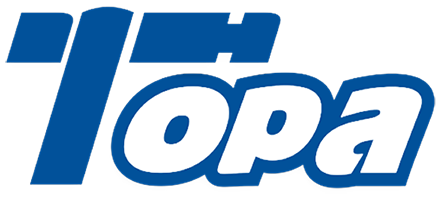Valves are essential components in fluid systems, acting as gatekeepers to control the flow of liquids and gases. Their primary function is to regulate, direct, or control the flow within pipelines, ensuring efficient operation while maintaining pressure stability. For instance, check valves prevent backflow, while ball valves provide quick on/off control. Valves play a crucial role in system integrity by maintaining proper flow direction, preventing pressure loss, and avoiding leaks.
What is a Check Valve?
Definition and Basic Function of a Check Valve
A check valve is a one-way valve that allows fluid to flow in only one direction and automatically prevents reverse flow. It functions as a safeguard to ensure that the fluid or gas does not flow back into the system, which could cause contamination, pressure issues, or damage to components. These valves are often used in situations where backflow could harm the operation of the system, such as in water supply lines, pump discharge systems, and fuel systems.
Types of Check Valves
Swing Check Valve: This is one of the most common types, featuring a disc that swings open when fluid flows in the correct direction and swings closed when the flow reverses. It’s ideal for applications with low to moderate flow rates and minimal vibrations.
Spring Check Valve: This type uses a spring-loaded disc to keep the valve closed when there is no fluid flow. When fluid flows in the correct direction, it overcomes the spring tension and opens the valve. Spring check valves are compact and often used in high-pressure systems.
Piston Check Valve: These valves use a piston mechanism to regulate flow. The piston is designed to move in response to fluid pressure, preventing backflow when the pressure decreases. Piston check valves are often used in high-flow and high-pressure applications.

How Check Valves Prevent Backflow and Maintain Pressure
Check valves are crucial in preventing backflow, which can lead to contamination, loss of pressure, or damage to equipment. When fluid is moving in the desired direction, the valve opens and allows flow. If the flow direction reverses, the valve closes automatically, sealing off the system and blocking any reverse flow. By maintaining proper flow direction, check valves help sustain the pressure within the system and ensure that the equipment operates efficiently without the risk of pressure fluctuations or damage. These valves are particularly important in applications such as sewage treatment, fire protection systems, and water pumps where maintaining the integrity of the flow is critical.
What is a Ball Valve?
Overview of Ball Valves and Their Mechanism
A ball valve is a type of valve that uses a hollow, perforated, and pivoting ball to control the flow of fluid. The ball is positioned inside the valve body, and it has a hole (or port) that aligns with the pipe when the valve is fully open, allowing fluid to pass through. When the valve is closed, the ball rotates 90 degrees to block the flow of fluid, preventing it from passing through. Ball valves are widely known for their simple design, ease of operation, and reliability, making them a popular choice for on/off flow control in various industries, including oil and gas, water treatment, and HVAC systems.
Types of Ball Valves
Floating Ball Valve: The ball in this type of valve is not fixed to any stem or support, except for being held in place by the pressure of the fluid against it. This design is ideal for smaller valves (usually up to 2-3 inches in diameter) and works well in low-pressure applications. The pressure from the fluid helps keep the ball tightly sealed against the valve seat.
Trunnion Ball Valve: Unlike the floating ball valve, the ball in a trunnion valve is fixed in place by a set of supports (or trunnions) that are mounted on the valve body. This type of valve is used in larger sizes and higher pressure applications because it ensures better control of flow, even at high pressures. The ball’s fixed position allows for more stability and reduces the chances of valve seat wear.
Multi-Port Ball Valve: Multi-port ball valves come with more than two ports, allowing for a more versatile flow control. They are commonly used to manage flow in different directions within a single valve, often found in systems that require more complex flow routes, like mixing or diverting applications. These valves can have three or more ports, making them ideal for redirecting flow in various piping configurations.
The Role of Ball Valves in On/Off Flow Control
Ball valves are most commonly used for on/off control in fluid systems, as their simple quarter-turn mechanism allows for quick and easy operation. When fully open, the ball’s port aligns with the pipe, offering minimal resistance to flow. When fully closed, the ball rotates to block the flow entirely, providing a tight seal that prevents leakage. This ability to fully stop or start the flow of fluids makes ball valves ideal for applications requiring precise flow control without the need for throttling. Their quick and reliable action makes them an excellent choice for applications like water distribution, fuel lines, and various industrial systems where stopping or starting the flow quickly is necessary for system safety and efficiency.
Check Valve vs Ball Valve: Key Differences
Operational Principles: One-Way vs Two-Way Flow
Check Valve: A check valve operates on a one-way flow principle. It allows fluid to pass through only in one direction and automatically prevents backflow when the flow direction reverses. The valve closes without manual intervention, ensuring that no fluid returns to the system. This makes it ideal for protecting equipment from reverse flow or pressure surges.
Ball Valve: In contrast, a ball valve controls flow in two directions but is typically used for on/off flow control. The ball inside the valve either aligns with the flow path (allowing fluid to pass through) or rotates to block it completely. Ball valves are used to start or stop the flow, not to prevent backflow. They are manually operated or actuated for precise control when needed.
Design and Structure: Simplicity vs Complexity
Check Valve: Check valves have a simpler design, typically consisting of a valve body, a disc (or ball), and a spring (in some cases). The simplicity of their design means they are lightweight and easy to install and maintain. They work automatically with no need for manual operation or external power sources, making them low-maintenance devices suited for passive flow control.
Ball Valve: Ball valves have a more complex design, consisting of a ball, a stem, seals, and often additional components like seats or actuator mechanisms. The complexity of ball valves means they are generally more durable and suited for more varied applications. While they can be automated and used for throttling, they require more precision in design and installation compared to check valves.

Speed and Efficiency: Quick Action vs Gradual Flow Control
Check Valve: Check valves respond to changes in fluid flow automatically and passively. Their action is based on the fluid’s pressure and direction, which means they can quickly close when backflow is detected. However, they do not control the rate or gradual adjustment of flow. Their efficiency lies in their ability to prevent reverse flow without the need for external control.
Ball Valve: Ball valves offer faster and more direct control over flow, providing immediate on/off action with a 90-degree turn of the handle. They excel in applications where rapid start/stop functionality is needed. Although ball valves can offer precise control, their design typically does not support gradual adjustments of flow (though some variations, like the ball valve with a throttling capability, can manage flow to some extent). Their speed and efficiency in controlling fluid make them ideal for applications where on-demand flow regulation is necessary.
Choosing the Right Valve for Your System
How to Choose Based on Application
Choosing the right valve depends on the specific needs of your system. Here’s how to determine which valve is best for your application:
For Backflow Prevention: If your primary concern is preventing backflow and protecting downstream equipment, a check valve is the ideal choice. These valves are designed to automatically block reverse flow, ensuring that your system remains free from contamination and pressure fluctuations.
For On/Off Control: If you need to control the flow of fluid in a pipeline quickly and efficiently, a ball valve is the better option. With a quick 90-degree turn, a ball valve offers reliable on/off control and can be used in systems requiring fast flow regulation, such as industrial processing lines or water distribution systems.
For Complex Flow Paths: In cases where flow needs to be diverted or directed in multiple directions, multi-port ball valves are ideal. They provide flexibility and ease in managing multiple flow paths without the need for complex piping systems.
For Pressure Management: In applications where pressure management is critical, ball valves with pressure-rated features can offer more precise control, while check valves help maintain a stable flow direction under varying pressure conditions.
Considerations for Fluid Dynamics and Pressure Regulation
When choosing between a check valve and a ball valve, it’s essential to factor in the fluid type, pressure, and flow characteristics of your system:
Fluid Type: Check valves are ideal for systems dealing with non-viscous fluids like water, gases, or light oils. Ball valves, however, can handle a wide range of fluids, including viscous liquids, slurries, and gases, making them more versatile in industrial applications.
Pressure Regulation: Ball valves are often better suited for systems with high pressure or systems that require precise control over flow rates. However, check valves are essential for preventing backflow in low to moderate-pressure systems and maintaining constant flow without reverse pressure surges.
Flow Characteristics: Check valves allow fluid to pass through in one direction, making them ideal for systems where directional flow is necessary. In contrast, ball valves can control two-way flow, and their function is better suited for applications requiring quick shutdown or startup of fluid flow.
Choosing for Plumbing vs Industrial Use
While both check valves and ball valves are used in plumbing and industrial applications, the requirements for each can differ significantly:
Plumbing Use: In residential or commercial plumbing, check valves are typically used to prevent backflow in water supply systems, ensuring water doesn’t flow backward into the main supply. Ball valves are used to control the water supply to appliances or fixtures, providing easy on/off functionality.
Industrial Use: In industrial applications, ball valves are commonly used for controlling large volumes of fluids in complex systems, such as in oil and gas pipelines, chemical processing, and power plants. Check valves are also critical in industrial settings to prevent reverse flow and protect sensitive equipment, such as pumps, from damage caused by backflow or pressure surges.
Valve Specifications: What You Need to Know
When selecting valves for your system, it’s important to understand the following specifications:
Pressure Rating: Ensure that the valve can handle the pressure of the system. Ball valves typically come with higher pressure ratings, while check valves are designed for specific pressure ranges based on their design and application.
Flow Rate: Ball valves provide precise control over flow rate, making them ideal for systems where the flow needs to be adjusted. Check valves, however, don’t offer flow rate control but rather ensure that the flow direction is maintained.
Size and Compatibility: Choose valves that are compatible with the diameter and type of your piping system. Check valves come in sizes that align with common pipe diameters, while ball valves are available in a variety of sizes to accommodate larger or specialized systems.
Material: The material of the valve affects its durability and suitability for different environments. For example, stainless steel ball valves are ideal for corrosive fluids, while brass check valves are commonly used for water systems. Make sure to select the correct material based on your fluid and environmental conditions.
Actuation: For automated systems, ball valves can be fitted with actuators for remote operation. On the other hand, check valves are typically passive and don’t require actuators, but some may include spring-loaded mechanisms for quicker operation.
Conclusion
While check valves are essential for backflow prevention, ball valves are suited for precise, controlled flow management. Always evaluate the fluid type, pressure, and system design before deciding to ensure you’re choosing the most efficient valve for the job.
FAQ
What is the main difference between a check valve and a ball valve?
A check valve allows fluid to flow in only one direction and automatically prevents backflow. A ball valve, on the other hand, provides manual on/off control by rotating a ball inside the valve to block or allow flow.
Can a check valve be used in high-pressure systems?
Yes, check valves can be used in high-pressure systems, but it depends on the type and material of the valve. Piston check valves are particularly well-suited for high-pressure applications.
What applications are best suited for ball valves?
Ball valves are ideal for applications that require quick, reliable on/off flow control, such as in gas pipelines, water treatment plants, and industrial processing systems.
Do check valves require regular maintenance?
Check valves typically require less maintenance due to their simple design. However, periodic checks are recommended to ensure they are functioning properly and are free from debris that might prevent them from closing fully.
Can ball valves be used for throttling or flow regulation?
While ball valves are primarily used for on/off control, they can be used for throttling in some cases. However, their performance in flow regulation is less precise compared to other valve types, such as globe valves.
How do I choose between a check valve and a ball valve?
Choose a check valve if preventing backflow is your main concern, and opt for a ball valve if you need precise, quick control over the flow of fluids in your system. Consider the application, fluid type, and pressure requirements when making your choice.







